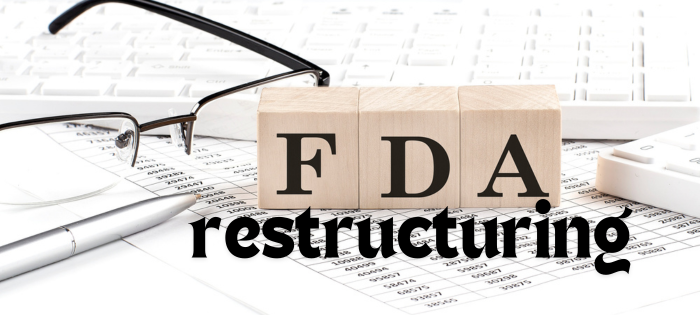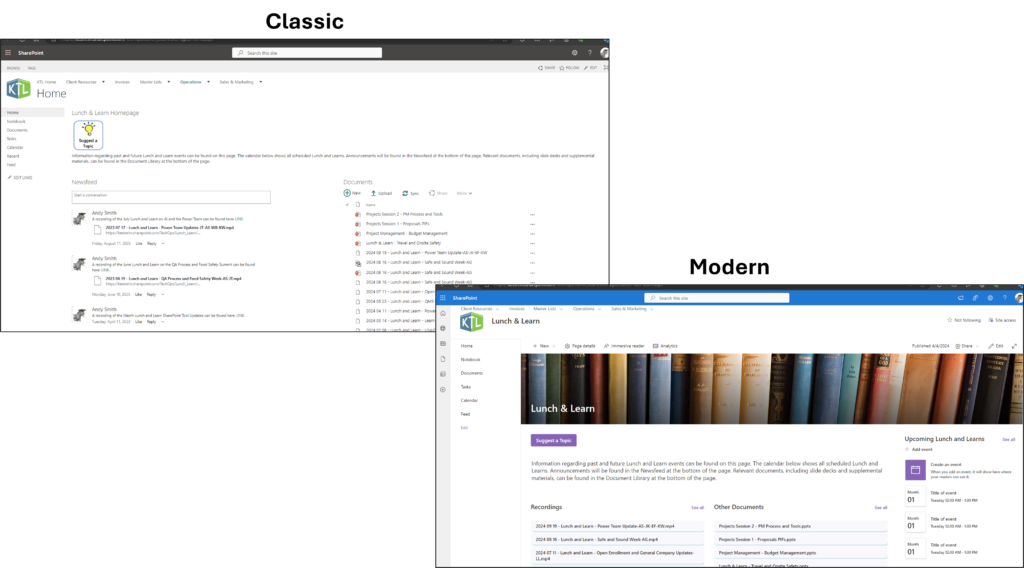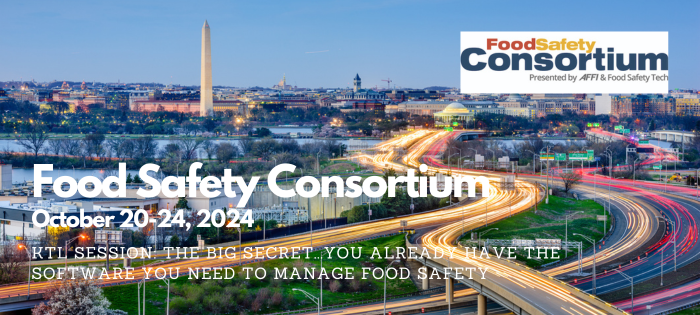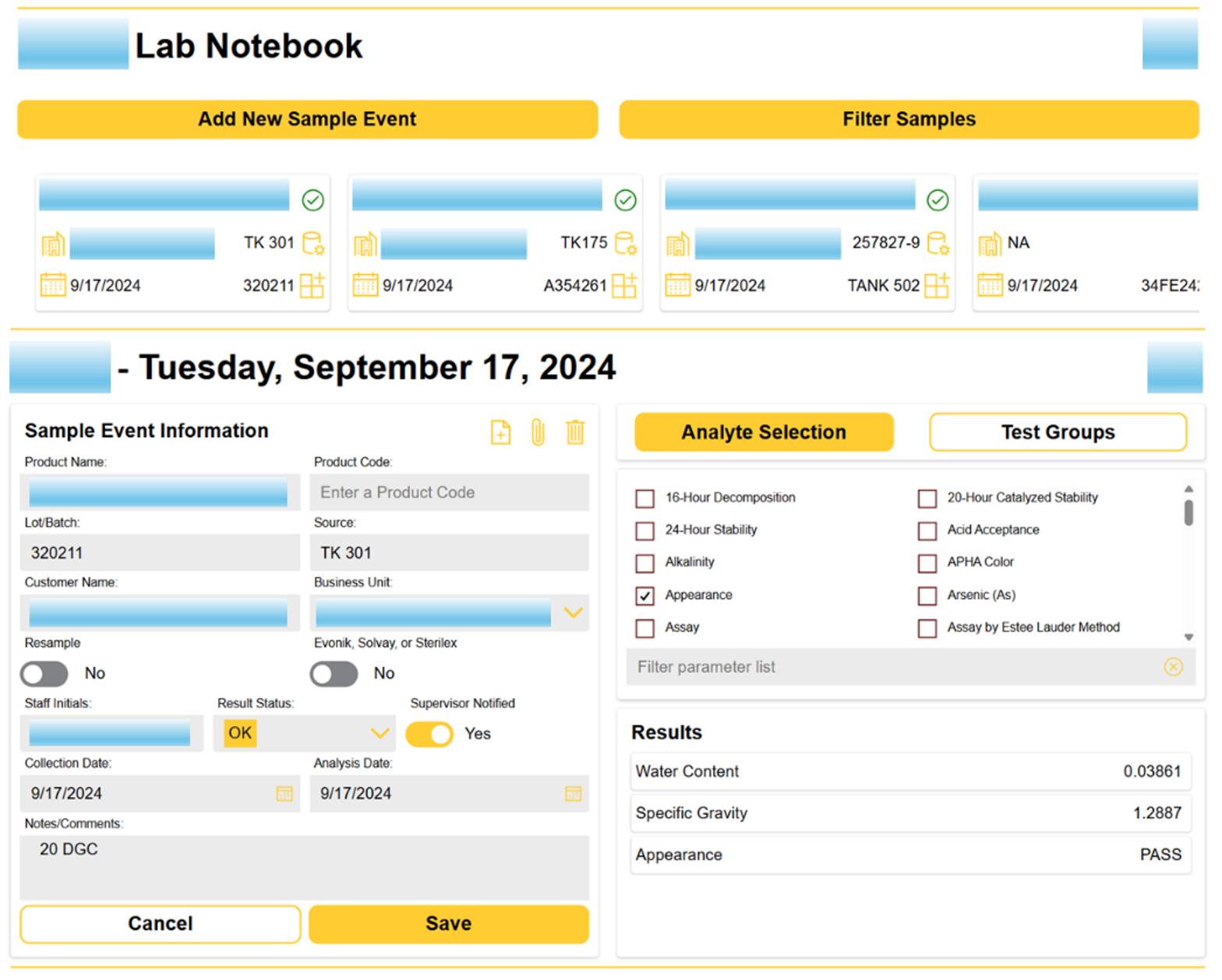
Comments: No Comments
KTL Expands Consulting Resources
KTL is pleased to welcome the following new Consultants to our team!

Margaret Roy, Senior Consultant
Margaret is an expert risk assessor who specializes in conducting ecological and health-based risk assessments ranging from screening level to complex baseline assessments under a variety of state and EPA programs. She has been providing risk assessment subject matter expertise to KTL for years as an LTE, and we are thrilled to have her join the team as a Senior Consultant. Margaret applies her experience to help clients design sampling plans, identify technical data gaps, and develop overall project strategy. Margaret is a Diplomate in the International Board of Environmental Risk Assessors (IBERA), as well as a member of the Society of Environmental Toxicology and Chemistry (SETAC) and Association for Environmental Health and Science (AEHS). She is based in Austin, TX. Read her full bio…
mroy@goktl.com | 512.913.5142

Connor Odekirk, Consultant
Connor is a food safety and quality assurance (FSQA) professional with five years of experience working in various capacities in the food industry, including restaurants, cattle ranches, farming operations, and U.S. Department of Agriculture (USDA)-inspected meat processing plants. Connor excels at managing sanitation and maintenance programs to maintain corporate and regulatory standards. He further has experience developing training and educational curriculum. He is based in Charleston, WV. Read his full bio…
codekirk@goktl.com | 304.545.5555

Comments: No Comments
KTL Co-Authors Study on Expanding Pharmacy Roles in Treating OUD
Access to treatment for opioid use disorder (OUD) is a challenge in rural settings and communities of color due, in part, to the limited availability of healthcare providers equipped and willing to provide medications for opioid use disorder (MOUD). Recent discussion has explored the role of pharmacies in enhancing access to MOUD within underserved areas. However, pharmacies face multiple obstacles related to expanded responsibilities in dispensing MOUD, especially in rural and other communities.
To address this issue, the National Drug Abuse Treatment Clinical Trials Network (CTN) funded a study (CTN-0124) to examine the practicality of expanding pharmacy roles in treating OUD in underserved communities.
KTL helped to lead the nine-month engineering systems analysis, assessing the existing system, envisioning an ideal future state, identifying gaps, and highlighting improvement opportunities. The study, Delivering MOUD to the Underserved: How Can Pharmacies Really Helped?, was recently published in the October 15, 2024 edition of the Journal of Studies on Alcohol and Drugs.

Comments: No Comments
FDA Restructuring: Impacts on Industry
On October 1, 2024, the Food and Drug Administration (FDA) began implementing the largest reorganization in the Agency’s recent history, including launching a unified Human Foods Program (HFP) to oversee all activities related to food safety and nutrition and transforming the Office of Regulatory Affairs (ORA) into the Office of Inspections and Investigations (OII), amongst other modernizations. This reorganization is intended to enhance the FDA’s ability to protect the human food supply and make the Agency more efficient and prepared to respond to changes in industries, food and medical product technologies, and the impacts of globalization and climate change.
HFP: Priorities for 2025
The FDA regulates 80% of the U.S. food supply. The HFP was designed to help ensure that the FDA-regulated food supply is safe by taking a systematic, risk management approach to implementing the preventive measures outlined in the Food Safety Modernization Act (FSMA) and responding to food-related emergencies. Specifically, the HFP’s mission is to protect and promote the health and wellness of all people through science-based approaches to prevent foodborne illness, reduce diet-related chronic disease, and ensure chemicals in food are safe.
To support this mission, FDA is implementing several operational changes, including developing enhanced risk modeling, advancing inspectorate training, establishing a Human Foods Advisory Committee, developing a performance management framework, improving recall communications, and integrating food laboratories to advance science.
The HFP has also prioritized key deliverables for FY2025 to strengthen regulatory oversight, advance science, and better leverage partnerships in the following risk management areas:
Microbiological Food Safety
Advancing strategies to prevent foodborne illness. Specific deliverables include:
- Finalizing an implementation plan for the FSMA Final Rule on Pre-harvest Agricultural Water.
- Advancing traceability tools and resources to remove contaminated products from the marketplace more quickly.
- Issuing final guidance for the Produce Safety Rule and developing associated compliance resources.
- Initiating a study to better understand Salmonella outbreaks linked to melons.
- Enhancing the use of GenomeTrakr to help identify and respond to outbreaks.
- Working with various stakeholder groups to develop strategies to prevent and mitigate microbiological foodborne risks.
- Enhancing communication and transparency, including publishing a new public outbreak report and facilitating information sharing related to fresh produce and seafood.
- Implementing regulatory partnerships with Ecuador, India, and Indonesia for imported seafood.
Food Chemical Safety
Ensuring exposure to chemicals in food is safe. Planned actions include:
- Reviewing inefficiencies in the current premarket review process for food or color additives to help prevent unsafe uses of chemicals.
- Updating the framework for post-market assessments of chemicals in food and publishing an updated list of substances prioritized for re-assessment.
- Establishing action levels and associated guidance for environmental contaminants in food intended for infants and young children.
- Releasing additional guidance on submitting new dietary ingredient notifications (NDINs).
- Issuing draft guidance for Preventive Controls for Human Food specific to chemical hazards.
- Completing external review and validation of the Expanded Decision Tree, which sorts chemicals into classes of toxic potential.
- Developing AI approaches to help monitor new data and trends.
- Evaluating and characterizing potential effects of PFAS exposure from selected foods.
- Partnering with international organizations on food chemicals and innovation to strengthen the global food safety system.
Nutrition
Elevating nutrition to improve health equity. Deliverables include:
- Issuing a final rule to update the definition of the claim “healthy” and educating the public.
- Proposing a rule to establish mandatory front-of-package nutrition labeling.
- Publishing a long-term national strategy to help facilitate the entry of new infant formula manufacturers and continuing education on safe handling of powdered infant formula.
- Advancing nutrition research to better inform food-related policy and regulatory decision making.
OII’s Focus on Inspections
Restructuring the ORA into the new OII is intended to allow the Agency’s field operations unit to focus on inspections, investigations, and imports to support its core mission to conduct rigorous, transparent, and science-based inspections and investigations, providing real-time evidence and insight essential in empowering fact-based regulatory decisions to protect public health. OII is charged with inspecting regulated products and manufacturers, as well as reviewing imported products.
This restructuring will enable the FDA to put more focus directly on inspections and investigations and, subsequently, create a more efficient compliance and enforcement process, clearer communication, and faster decision-making. As a result of this transformation, inspections have the potential to become more efficient—and more frequent. In addition, increased inspection resources may allow inspectors to specialize in specific product areas, which could lead to more thorough and knowledgeable inspections.
Keeping Up
As with any regulatory change, FDA-regulated companies need to get up to speed on FDA’s recent restructuring and its potential impacts:
- Educate staff on FDA’s reorganization and potential implications for your organization.
- Identify any new points of contact for your organization within the FDA (i.e., HFP, OII), anticipate how your interactions may change, and start building new relationships, where necessary.
- Review the HBP priorities and compliance expectations for FY2025 compared to internal programs, protocols, etc. and make any required updates to ensure alignment.
- Prepare for potential changes when it comes to inspections, including more frequent and more specialized inspections. This may include educating staff to get a deeper understanding of products/operations and the associated regulatory requirements and/or stepping up compliance efforts, where necessary.

Tech Corner: SharePoint® Modernization
KTL uses the Microsoft Power Platform®—including SharePoint®—as a suite of dynamic information management tools that can be customized to provide streamlined, centralized information management and consolidated reporting to all levels of the organization.
SharePoint is constantly evolving to provide enhanced functionality to users. In 2016, Microsoft introduced the “modern” experience for SharePoint as a significant improvement, with its more modern interface that integrates better with mobile screens. When it was introduced, converting to the modern interface was optional; companies could continue operating their existing “classic” sites without necessitating significant updates. But in the past eight years, classic sites have become outdated, have limited mobile integration, and are beginning to experience performance issues resulting from limited ongoing support. Further, previous methods of creating custom forms (InfoPath) or workflows (SharePoint Designer) are slowly being phased out in favor of modern replacements. Because of this, organizations are being pushed to migrate from classic to modern SharePoint to keep their sites running and usable.
Benefits
Beyond responding to the slow depreciation of classic sites, modern SharePoint offers significant enhancements that improve user experience and overall site performance, including the following:
- Modern, Intuitive Interface: The user-friendly interface offers streamlined navigation, improved layouts, and mobile responsiveness for optimal viewing on different screen sizes (e.g., phone, laptop, desktop, tablet). This provides easier user interaction and enhanced accessibility in the office, plant, field, etc.
- Performance Optimization: Modern SharePoint sites are optimized for performance. The search functionality is more powerful and produces more relevant search results that are easier to filter and find. Optimization also creates faster page load times to improve efficiency for users.
- Flexible Modern Web Parts: Modern’s wide range of configurable web parts can be simply added or modified to update site content.
- Custom Workflows and Automation: Modern SharePoint can be more easily tailored to specific business needs by integrating Power Automate, Power Apps, and other apps to build custom workflows, forms, and automations that support changing business processes.
- Seamless Microsoft 365 Integration: Modern SharePoint integrates deeply with other Microsoft 365 tools, including Microsoft Teams, OneDrive, and Planner. This makes collaboration more efficient, as employees can work together in real-time using familiar tools.
Get Modernizing
Microsoft suggests taking a four-step approach to transitioning from a classic SharePoint site to a modern one:
- Assess. Inventory your existing site, determine priorities for modernization, and establish a clear scope of work.
- Strategize. Develop a strategy for how the classic site will be transformed into a modern site, considering the various impacts of the transition on different elements of your system.
- Execute. Create an implementation plan to outline what needs to happen to update each site and associated roles, responsibilities, tasks, and timelines.
- Enhance. Consider the many opportunities for integrations and enhancements to address business needs once sites have been converted.
Transitioning from a classic SharePoint site to a modern one is not considered a “simple” process, because there is no one-to-one mapping between the functionality offered by classic web parts and what is offered on modern pages. But it is worth doing. Modern sites are less costly to create, quicker to implement, easier to manage, and much simpler to edit and update.
If you currently have a classic SharePoint site, KTL can walk you through the modernization process to help ensure your sites deliver improved functionality, enhanced user experience, and better overall performance. Please reach out and set up a no-obligation demo.


Comments: No Comments
Food Date Labeling Reform
“Best if Used by”, “Sell by”, “Expires on”, “Freeze by”…
Consumers see various versions of these phrases on food product labels all the time. But do they understand what these labels mean? Does industry? According to the Food and Drug Administration (FDA), it is estimated that the confusion over date labeling terms on food products accounts for about 20% of the food waste in the home. This is significant given that the U.S. Department of Agriculture (USDA) estimates nearly one-third of available food in the U.S. (i.e., 133 billion pounds) goes uneaten due to food loss or waste.
Why the confusion? Because open date labeling is still not mandated or standardized by federal law. In fact, the State of California just recently passed the first legislation of its kind in September 2024 to standardize the use of open date labeling on food products.
Nutrition Labeling vs. Open Date Labeling
The Nutrition Labeling and Education Act (NLEA) of 1990 requires that food manufacturers provide standardized nutritional information on their products. It also requires that food labels comply with certain requirements if they make nutritional or health claims. The FDA developed the Nutrition Facts Label to comply with the requirements of the NLEA.
The phrases mentioned above are considered open date labeling and are not part of the NLEA. Any open date labeling on food products is applied voluntarily by manufacturers or retailers to tell consumers when food is of best quality. With the exception of infant formula, these dates are not required and are not related to a product’s safety.
The USDA gives the following definitions of common phrases on open date labels:
- “Best if Used by/before” indicates when a product will be of best flavor or quality. It is not a purchase or safety date.
- “Sell by” tells the store how long to display the product for sale. This phase is for inventory management; it is not a safety date.
- “Use by” provides the latest date recommended for the use of the product while at peak quality. It is not a safety date (except on infant formula).
- “Freeze by” indicates when a product should be frozen to maintain peak quality. It is not a purchase or safety date.
A Question of Quality
For most, the confusion lies in understanding the status of a food product once the open date passes. While the quality of perishable products may deteriorate after a “Best if Used by” date, most products remain safe to eat, sell, or donate as long as they are handled properly (e.g., correct temperature and storage conditions) and show no signs of spoilage. In fact, the USDA suggests that food handling conditions are a greater predictor of spoilage than time (i.e., open date).
Sources including FDA, USDA, and a number if industry associations believe that food waste is due, in part, to fears about food safety and consumers not understanding that date labels refer to the quality of a product versus its safety to consume.
Call for Standardization
Despite this confusion and the associated ramifications (i.e., wasted food, economic loss), no mandatory federal labeling standard has been enacted, though attempts at standardization have been made:
- The Food Recovery Act of 2015 introduced the first language to standardize date labels, but it did not pass Congress.
- In December 2016, the USDA Food Safety and Inspection Service (FSIS) updated its guidance on product date labeling, recommending that manufacturers and retailers use the phrase “Best if Used by” to indicate when a product is at peak quality.
- In 2017, industry stepped in, as the Food Manufacturing Institute (FMI) and the Consumer Brands Association (CBA) adopted joint industry guidelines to standardize open dates.
- The FDA issued a letter supporting industry’s efforts to standardize date labeling in May 2019. Consistent with the USDA, the FDA recommended using the “Best if Used by” date for manufacturers choosing to apply a quality date label.
- In 2019, the first Food Date Labeling Act (FDLA) was introduced in Congress and failed to pass. The FDLA was introduced again in 2021 and, most recently, in 2023.
California Leads the Way
In the meantime, the State of California has forged ahead, passing legislation in September 2024 to standardize the use of open date labeling on food products. Beginning July 1, 2026, the law implements the first mandatory food date labeling for companies selling food products in California by instituting the following changes:
- “Best if Used by” must be used to indicate the date when a product reaches peak quality.
- “Use by” must be used to indicate the date when a product’s safety can no longer be guaranteed.
- Retailers will be authorized to display “Packed on” labels on prepared food items, but they must also display the “Best by” or “Best if Used by” dates.
- Consumer-facing “Sell by” dates are prohibited and may only be used for inventory management.
- The phrases “Expires on” and “Freshest by”, which have inconsistent definitions, are prohibited.
Support from Industry
According to the Zero Waste Food Coalition, over 25 industry supporters have signed the Zero Food Waste Coalition’s open letter urging Congress to support the bipartisan Food Date Labeling Act of 2023… Major food industry businesses, including Kroger, Walmart, and Nestlé USA, have signed the letter, which cites that standardizing and streamlining date labels is one of the most cost-effective methods to prevent the wasting of surplus, wholesome food.
Currently, it is at the food manufacturer’s/retailer’s discretion to use open date labeling as they see fit. As such, it is important for manufacturers and retailers to understand what the various open date labeling phrases mean before applying them to products. The available USDA, FDA, and industry guidance is meant to alleviate consumer confusion and should be used as best practice in absence of a federal standard. Using this guidance to standardize open date labeling practices to the extent possible may help manufacturers extend the shelf-lives of their products, prevent the corresponding economic loss of removing inventory from the supply chain, and reduce the amount of wholesome food being wasted.

KTL to Join the Technical Program of the SETAC Annual Meeting
KTL will be joining the technical program of the Society of Environmental Toxicology and Chemistry (SETAC) North America 45th Annual Meeting October 20-24, 2024 in Forth Worth, TX. SETAC is dedicated to advancing environmental science and science-informed decision-making through collaboration, communication, eductaion, and leadership.
KTL Senior Consultant Margaret Roy will be co-chairing Session 6.04.T – Risk Assessment, Remediation, and Restoration: Applying Interdisciplinary Approaches to Creating Successful Remediation and Restoration Projects on Wednesday, October 23 from 10:00am – 12:00pm.
In addition, KTL is co-author to the following poster, which will be on exhibit all day on Monday, October 21:
Human Health and Ecological Risk Assessment of the Herbicide Flumioxazin for the U.S. Forest Service
5.12.P-Mo-160 | Presenters: Julie Rothrock, SRC, Inc.; Margaret Roy, KTL; and Dan Tekiela, U.S. Forest Service
The United States Department of Agriculture (USDA) Forest Service (FS) is responsible for protecting and managing natural resources on National Forest System lands. Pesticides are one tool used by the FS to prevent, control, or manage forest insects, diseases, and invasive plants. When considering the use of a pesticide on forest lands, the FS conducts a human health and ecological risk assessment (HHERA) to evaluate risk to FS personnel, the public, and the environment, and to then make decisions regarding specific applications of pesticides on forest lands throughout the U.S. This poster presentation outlines the process for conducting theHHERA for the herbicide flumioxazin to estimate the nature and degree of potential risks, both human health and environmental, associated with its use in FS vegetation management programs.

Now Hiring: Safety Consultant
Location: Chicago, Illinois or St. Lous, Missouri
KTL is seeking an experienced Safety Consultant based in the Chicago, IL or St. Louis, MO metropolitan area with a strong safety compliance background working as a consultant or in industry to join our team. This individual will have knowledge of general industry safety procedures and Occupational Safety and Health (OSHA) requirements. The Safety Consultant will have experience auditing, developing, and implementing OSHA safety programs in an industrial setting, and expertise helping organizations proactively manage their operational safety-related risks.
Responsibilities and tasks include the following:
- Conducting OSHA compliance audits in general industrial settings.
- Researching federal, state, and local regulatory requirements and helping maintain standards.
- Effectively managing and building client relationships, leading to repeat business.
- Developing and delivering training and coaching on safety.
- Performing site safety assessments, conducting incident investigation/root cause analysis, and implementing follow-up corrective actions.
- Working with a team to assess, design, implement, and audit safety management systems and related programs.
- Designing safety performance metrics to drive continual improvement.
- Applying quality and process improvement methods and tools.
- Writing technical reports, work plans, and proposals.
- Supporting other KTL professionals to effectively manage and deliver projects.
- Managing tasks remotely and at client sites.
Requirements
- B.S. degree in Environmental Science, Engineering, or Occupational Safety preferred.
- 5-10 years of consulting or relevant experience working in safety for industry/manufacturing.
- Associate Safety Professional (ASP) or Certified Safety Professional (CSP) preferred.
- Recent experience conducting safety audits.
- Strong knowledge of OSHA safety standards and programs.
- Experience with environmental compliance preferred.
- Experience in healthcare preferred.
- Previous project management experience and ability to manage multiple projects and clients.
- Excellent verbal and written communication, interpersonal, and presentation skills.
- Excellent research, analytical, writing, and organizational skills.
- Ability to work independently and as a part of a team.
- Proficient in Microsoft 365 software.
- Valid driver’s license.
- Ability to travel up to 50%.
How to Apply
Forward a resume to recruiting@goktl.com.
Company Description
KTL is a multidisciplinary consulting firm that specializes in providing environmental, health, and safety (EHS); food safety; and quality management and compliance consulting services to industry and government clients. Our primary focus is to build strong, long-term client partnerships and provide tailored solutions to address regulatory compliance requirements. KTL’s services include auditing and assessments, management system development and implementation, certification support, regulatory compliance assistance, information management solutions, and training. Our headquarters are in Madison, WI and Atlanta, GA, with satellite offices throughout the U.S.

Don’t Miss KTL at the 2024 Food Safety Consortium
KTL is excited to be joining the 2024 Food Safety Consortium in Washington, DC, October 20-24, 2024. The 13th Annual Food Safety Consortium provides food safety and quality assurance professionals with cutting-edge knowledge, practical skills, and a collaborative network to enhance their professional development as champions of food safety.
KTL will be leading the following breakout session as part of the workshop’s technical agenda:
The Big Secret…You already have the software you need to manage food safety
October 22, 2024 | 8:30-9:15 am | Presenter: Roberto Bellavia, Senior Consultant and Partner
This session will demonstrate how food companies are leveraging Microsoft Power Platform with SharePoint® to elevate the food safety management systems (FSMS) and more effectively manage food safety compliance documentation, data, and certification requirements.
And be sure to stop by and visit us at Booth #11. We look forward to seeing you at the Food Safety Consortium!

Tech Corner: Laboratory Information Management System
Functionality: What does it do?
Laboratory Information Management Systems (LIMS) are tools designed to manage laboratory samples, associated data, and workflows in a user-friendly interface. KTL uses the Microsoft Power Platform to build and customize LIMS to provide organization-specific functionality, including the following:
- Samples can be tracked as individual or grouped assays.
- Workflows can be established to improve processing and reduce errors.
- Data is centralized for access and quality control improvements.
Benefits: Why do you need it?
Having a reliable LIMS can help organizations to:
- Manage and control large amount of laboratory data and samples.
- Reduce time required to track samples.
- Create detailed chain of custody.
- Provide notifications and tracking of approvals.
- Attach documents and photos to samples to provide more detailed information.
- Deliver results to identified users.
Technology Used
- SharePoint or Dataverse
- Power Apps
- Power Automate


Kestrel Tellevate News / Safety
Comments: No Comments
KTL to Present on Tools to Create a Safety Culture
Look for KTL October 15-17, 2024 at UW-Madison’s 36th Annual Product Liability Conference in Madison, WI. The Conference presents current and emerging product liability prevention practices. KTL will be leading the following session as part of the Conference agenda:
Creating a Safety Culture: Tools and Strategies for Growth
Session 6 | Presenters: Will Brokaw, MS, Consultant, and April Greene, CSP, CHMM, Consultant
Safety culture is the sum total of your organization’s values, beliefs, attitudes, and actions toward safety. It is often referred to as “the way we do things around here” regarding safety. Previous research has identified key attributes or qualities that positive safety cultures share. This presentation will review these key attributes, provide real world examples, and discuss tools and strategies organizations can use to assess and improve their existing safety culture.
